269th anniversary of Jeremy Bentham’s birth (2017)

Today is the 269th anniversary of Jeremy Bentham’s birth. And I wonder why Google did not create a Google-Doodle for the founder of modern utilitarianism.
In his studies of English law, he realized early on that it was not “what it was said to be; neither was it what it ought to be.” In the 1770s he described his despair and resolution:
“… I entered upon the task. I had been taught to believe both in print and in conversation that it is in [its] . . . several parts as beneficial to the people as the whole together is profitable to those who study it as a profession: that it is as near to perfection as any thing can be that is human; that if it has any imperfections, they are like spots in the sun, absorbed in the splendour of superior beauties. As I advanced every page I read seemed to furnish an exception to those general rules; till at last I began to be almost at a loss to conjecture upon what particular observations could have given occasion to these magnificent positions.
… I saw crimes of the most pernicious nature pass unheeded by the law: acts of no importance put in point of punishment upon a level with the most baneful crimes: punishments inflicted without measure and without choice: satisfaction denied for the most crying injuries: the doors of justice barred against a great majority of the people by the weight of wanton and unnecessary expense: false conclusions ensured in most questions of fact by hasty and inconsistent rules of evidence: light shut out from every question of fact by fantastic and ill consider’d rules of evidence: the business of hours spun out into years: impunity extended to acknowledged guilt and compensation snatched out of the hands of injured innocence by . . . impertinent & inscrutable exemption: the measure of decision in many cases unformed: in others locked up and made the object of a monopoly: the various rights and duties of the various classes of mankind jumbled together into one immense and unsorted heap: men ruined for not knowing what they are neither enabled nor permitted even to learn: and the whole fabric of jurisprudence a labyrinth without a clew. These were some of the abominations which presented themselves to my view . . . From the view … I confess resulted a passionate desire of seeing them done away.”
Jeremy Bentham : an odyssey of ideas
by Mack, Mary Peter
Published 1963
This is not a bikini (2016)
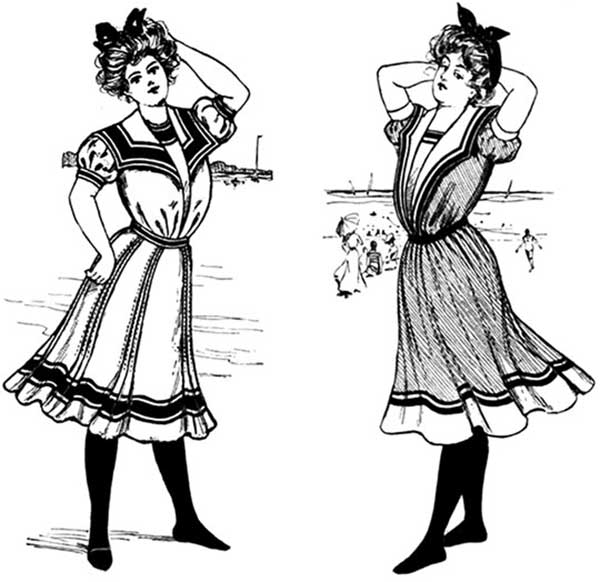
On July 5, 1946, five days after the explosion of a nuclear bomb on Bikini Atoll, French automobile engineer and clothes designer Louis Reard unveiled the first bikini bathing suit to the world. It was daring and shocking. Reard’s inspiration was the nuclear blast on the tiny Pacific Ocean atoll of the same name. The French newspaper Le Monde said that the word ‘bikini’ was as lashing as the atomic explosion, that it had annihilated clothing as we knew it, and brought forward an extreme minimization of modesty. Some called it ‘the first a(na)tomic bathing suit in the world’ (… la première bombe an-atomique).
But the bikini is not a modern idea; the Greeks and the Romans had it all figured out. In 1959, the Italian archaeologist, Gino Vinicio Gentili, excavated the ‘bikini girls mosaic’ at the Villa Romana del Casale. This artwork entitled Coronation of the Winner shows young women in two-piece suits performing various sports. Perhaps the discovery of the bikini girls mosaic paved the road for even more daring inventions. In 1964 fashion designer Rudi Gernreich unveiled the monokini, the first topless swimsuit for women. Gernreich believed that the prefix “bi” as in bikini meant two. He was wrong. Similarly to the famous butterfly’s wings in Brazil, this mistake started to create a series of storms across the globe. All kinds of swimsuits were invented based on the same assumption: microkini, tankini, trikini and now the famous burkini.
According to the Wikitionary, kini means many things. It is an alcoholic beverage in Hawaïan, a woman in To’abaita, the adverb now in Malay, to nip in Maori and KINI is a radio station in Nebraska. Unfortunately, kini has nothing to do with the lower part of a two-piece swimsuit. By naming the Islamic inspired swimsuit burkini, Aheda Zanetti, the fashion designer who created the garment, only perpetuated the misconception. There is nothing ‘kini’ about the burkini. In fact, the burkini is similar to the 1800’s bathing gowns that embodied Victorian ideals of religious morality and prudery. The problem with the construction of this word is that when we talk about the burkini, we invoke the bikini. In our minds, we allude to revealing the body of the swimmer, while in fact the burkini is covering that same body. It is an oxymoron like ‘sweet agony’ or ‘true myth’. If the bikini was born out of an explosion, the burkini is closer to an implosion. The bikini fashion started with a bang while the burkini is threatening to close the trend with a whimper.
Nevertheless, the dress code war that is being waged in France is not new. What is sanctioned and what is forbidden to wear on a beach is part of a long-time struggle to break away from the iron collar of modesty. In 1921, Louise Rosine, a writer from California, was arrested in Atlantic City for rolling down her stockings and showing her bare knees on a public beach. She fought back saying that it was ‘none of Atlantic City’s business to roll them up or down’ and she threatened to bring the City to court. Before that, in 1907, the Waverly Shire Council in Sydney, Australia required the wearing of a skirt-like tunic by male bathers. Mayor, R. G. Watkins said:
After contact with water… the V-trunks favoured by many of the male bathers show up the figure… in a very much worse manner than if they were nude… people who patronize them should not be compelled to overlook bathers whom they do not agree with.
Soon after, the Sydney bathing costume protests erupted. Thousands of male surf bathing enthusiasts wearing women’s clothing made a point to show the ridiculousness of the proposed regulations.
What we should have learned by now is that people should be permitted to decide for themselves. If people want to wear bikinis, let them wear bikinis, if they want to go to the beach in long swimming gowns, let them do so. We know that “those who look directly at [a nuclear] blast could experience eye damage ranging from temporary blindness to severe burns on the retina.” The problem here is that explosion and implosion are two different ways to detonate nuclear weapons. The advice is not to look at the blast, but in the battle royal between fashion police and morality squads, we have decided to stare.
Daniel H. Dugas
3 September 2016
NOTES
• Le Monde, 1947, ‘Bikini, ce mot cinglant comme l’explosion même … correspondant au niveau du vêtement de plage à un anéantissement de la surface vêtue; à une minimisation extrême de la pudeur.’
• For an informative write-up about the transformation of swimsuit through the ages see The Evolution Of The Bathing Suit From The 1800s Until Today
• Bikini Girls mosaic: Villa Romana del Casale
• KINI 96.1 FM is a radio station broadcasting a Variety music format.
• Louise Rosine: Keep her knees bare in Atlantic City jail, The New York Times, September 4, 1921.
• For Mayor R. G. Watkins’ comments see ‘Tourism and Australian Beach Cultures: Revealing Bodies‘, Christine Metusela, Gordon Waitt, Channel View Publications, Toronto, 2012, p. 32.
• Sydney bathing costume protests: Fun on the Beaches, The Sydney Mail and New South Wales Advertiser, 23 Oct 1907
• Bathing Machine: Sea-Side Etiquette, Victoriana Magazine
• Centers for Disease Control and Prevention: Radiation
• TOP IMAGE : The Delineator magazine
People Carrying Signs (2016)
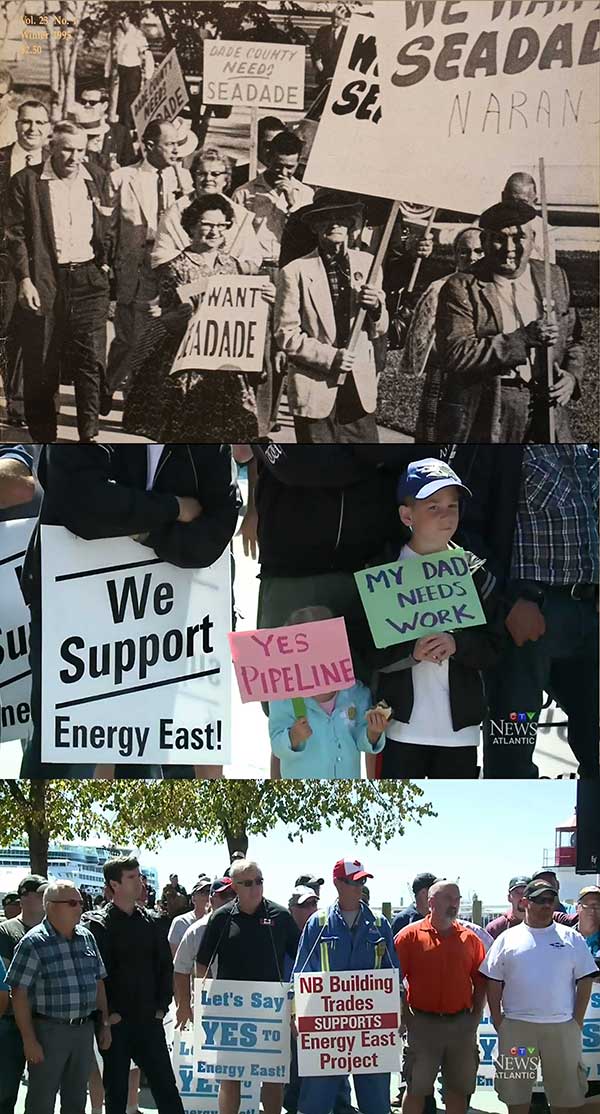
People carrying signs
Two images
of people carrying signs
supporting
a refinery
Wanting
a pipeline
Then it was Seadade
A chemical plant and an oil processing temple
along the shores of Biscayne Bay
Now it’s Energy East
A continental pipeline
to be laid across the land
over rivers and rivers and rivers
until it reaches the edge of the Bay of Fundy
Two images
of people carrying signs
of old folks and kids alike
The man with the cigarette in his mouth
and the woman with the pointy glasses
never saw their dream come true
But what about the YES PIPELINE kid
Will she be part of the sacrifice?
I don’t think
they understood then
or understand now
what is at stake
the gamble at play
The sheen of oil is making us mad
when we are willing to risk everything
to ease our pains
The sheen of oil is making us mad
when we believe that this endless tube of tar is not the Moloch
to which we will have to feed our own
Daniel H Dugas
August 12, 2016
Tales of two bays
The Bay of Fundy in Canada and Biscayne Bay in Florida are separated by more than 3,000 kilometers. At first glance, they seem to be worlds apart, but looking back into archival material, we realize that these two ecosystems have a shared history with industrialization. In this drama of progress we find two key players: K. C. Irving, one of Canada’s foremost 20th century entrepreneurs and Daniel K. Ludwig, shipping magnate and businessman with numerous companies, sometimes referred to as the American Onassis.
In 1959, Ludwig began buying acreages in South Dade, Florida to build a deepwater port and a refinery on a bayfront site east of Homestead Air Force Base. The project called Seadade was approved in 1962 and was supported by the Greater Miami Chamber of Commerce, but soon faced growing opposition from the Safe Progress Association (SPA). The SPA argued that Biscayne Bay, a warm and shallow, salt lagoon could be easily and irreversibly harmed by industrial pollution. Support for the project faded and in 1968 the American Congress passed the Biscayne National Monument Act, establishing a 96,000 acre preserve.
The industrial developments threatening Biscayne Bay are not isolated circumstances, they are happening everywhere in the world. The geological makeup of the Bay of Fundy in Canada seems to be diametrically opposite to the one of Biscayne Bay. Fundy is known to have the highest tides in the world whereas Biscayne Bay is a shallow semi-enclosed lagoon. But similarities emerge when we look at the relationship between humans and these ecosystems. The first parallel is between the historical players behind the refineries of Seadade and the Energy East project. Energy East would send its tar sands oil across a vast section of North America to Irving’s refinery in Saint John, New Brunswick. The narratives arcs of the two tycoons followed similar trajectories: Ludwig was born in 1887 and Irving the founder of Irving’s empire, was also born just about the same time, in 1899. Both magnates died the same year, in 1992. The two of them were involved in a wide range of holdings, shipbuilding, pulp paper and oil refinery among other things. Their fortunes were equally formidable. In 1982, Ludwig was #1 on the first Forbes 400 “Richest Americans” list, while Fortune Magazine in 1989 listed K. C. Irving as the 11th wealthiest man on earth.
There is a second connection between Biscayne Bay and the Bay of Fundy. Both locations have nuclear plants built on their shores. The Turkey Point Nuclear Generating Station was built just next to Biscayne National Park in 1973 while the construction of Point Lepreau in New Brunswick was started in1975. Both stations have had their share of safety problems in the past and are still plagued with ongoing problems today
The two bodies of water, on the Atlantic coast of North America, are magnificent. They are true natural wonders of the world. The question is why pristine areas are such magnets for big polluters? Why do they have to choose the most biologically diverse ecosystems to set up shop? If Biscayne Bay managed to avoid Seadade, can the Bay of Fundy do the same with Energy East? The two already have their own nuclear stations, their own safety, and cost management conundrums, it seems that this should be enough danger to deal with.
Daniel H Dugas
August 14, 2016
Notes
The Florida Experience: Land and Water Policy in a Growth State, Mix-up on South Bay, Luther J. Carter, RFF Press, New York, 1975p 157-192.
Daniel Ludwig, Billionaire Businessman, Dies at 95, The New York Times:
http://www.nytimes.com/1992/08/29/us/daniel-ludwig-billionaire-businessman-dies-at-95.html?pagewanted=all
K. C. Irving, 93, Industrial Tycoon Dominant in Canadian Province, The New York Times:
http://www.nytimes.com/1992/12/14/world/k-c-irving-93-industrial-tycoon-dominant-in-canadian-province.html
Study shows severe nuclear accident at Point Lepreau 40 times more likely than initially thought:
https://www.conservationcouncil.ca/study-shows-severe-nuclear-accident-at-point-lepreau-40-times-more-likely-than-initially-thought/
Evidence of salt plume under Turkey Point nuclear plant goes back years:
http://www.miamiherald.com/news/local/environment/article73233802.html
Nuclear energy, David Suzuki:
http://www.davidsuzuki.org/issues/climate-change/science/energy/nuclear-energy/
‘Nuclear power creates radioactive waste for which there is no accepted method of safely managing or storing. It is also prohibitively expensive.’
SAFE PROGRESS ASSOCIATION, INC. is a business entity formed in Florida and is a Domestic Non-Profit under local business registration regulations. Having the registration number 703668, according to the official registry, it is now Inactive. http://www.associationdatabase.org/safe-progress-association-inc
IMAGE CREDIT
Left: Pro Seadade demonstrators, January 23, 1963. South Florida History Magazine, Vol. 23, no 1, Winter 1995. / Middle: 18th-century depiction of the Moloch idol from Johann Lund’s Die Alten Jüdischen Heiligthümer (1711, 1738). / Right: Video still from CTV Atlantic ‘Pipeline arguments at NEB hearings’ by Ashley Blackford, August 8, 2016.
Collateral damage (2016)
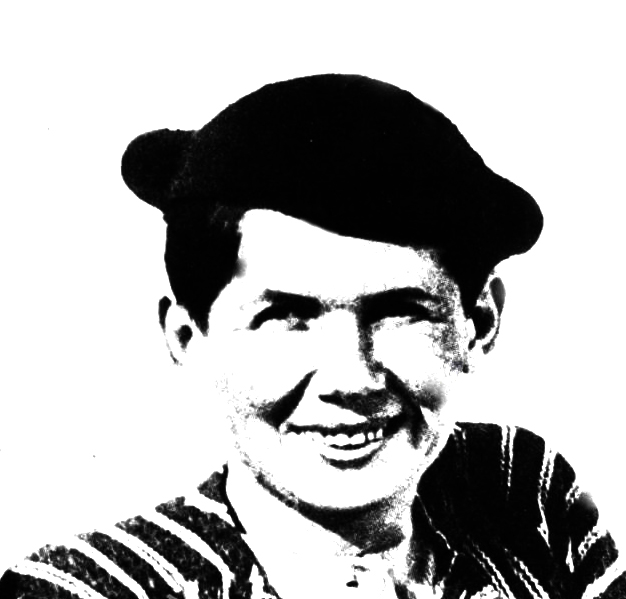
Pauline Pfeiffer, 1934
Collateral damage
You never know what you’re going to find,
where you’re going to end up.
I woke up this morning thinking about Hemingway,
Ernest, his house, the sun, Key West.
I went to his house once while visiting Key West.
I remember the pool, the catwalk connecting his home to his writing studio, the spacious art deco bathroom, the heat.
Hemingway lived in paradise and died in Idaho.
He was born in 1899.
There is now, only one person in the entire world,
one lonely soul that was born before him.
He was married four times.
His second wife,
the American journalist Pauline Pfeiffer,
died on October 1, 1951.
She and Ernest married in 1927,
honeymooned in Le Grau-du-Roi
in the South of France and
divorced on November 4, 1940.
Pauline Pfeiffer died of an acute state of shock.
It was precipitated by the news that her son Gregory,
who had experienced gender identity issues for most of his life,
had been arrested entering a woman’s restroom in a movie theater.
When I woke up this morning,
I didn’t know
that anyone had ever died because of a transgender bathroom issue.
You never know what you’re going to find,
where you’re going to end up.
Daniel H. Dugas
May 14, 2016
Caution over daring (2016)
Irving Oil has contracted B + H Architects to design their new headquarters. The company had a unique chance to create a bold architectural statement, something that would have stood out in the cosy downtown of Saint John, the first incorporated city in Canada. It’s not every day that a chance like this comes along. Instead, Irving decided to build something that looks like a totalitarian monument reminiscent of the best of Ernst Sagebiel, whose style was described as “Luftwaffe modern”. They could have made an audacious statement, but chose caution over daring.

Irving Oil reveals plans for new headquarters in Saint John
Merit, Finance and Depth of Field (2016)
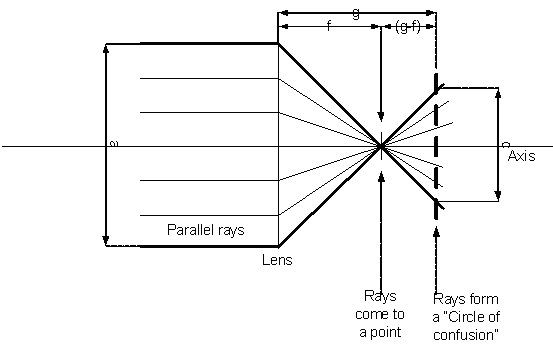 Keywords: arts, artistic merit, arts boards, money, poverty, fairness
Keywords: arts, artistic merit, arts boards, money, poverty, fairness
The message to the poor and discontented is that they must not impatiently upset or kill the goose that will assuredly, in due course, lay golden eggs also for them. And the message to the rich is that they must be intelligent enough from time to time to help the poor, because this is the way by which they will become richer still.[1] E. F. Schumacher, Small is Beautiful
My hope this year is that something changes. For example, a change in the system that manages arts grants, specifically the criteria for assessing projects. In all the Arts Councils or Arts Boards across the country, and in many parts of the world, there are two rules for evaluating an application. The most important element for this evaluation is the artistic merit of a candidate. This is how jurors decide if someone will get a grant or not. The second rule is that the financial situation of a candidate should not have any influence on the decision. I have always been opposed to this way of assessing applications. I believe that the financial situation of an artist has a direct influence on the artistic merit of that artist. I have stated this for years while participating in both Canada Council for the Arts and New Brunswick Arts Board juries. Every time I have raised the issue, I got the same terse response; that those are the rules, the foundations of the whole thing, period. I believe that laws or rules are not by themselves proofs of fairness and history is full of such examples.
The straw that broke the camel’s back (forcing me to sit down to state this in writing) came a few weeks ago when I read a press release of grants awarded by the one of the provincial Arts Boards in the country. One of the successful candidates is also a full-time professor at a University and the grant will allow this professor to attend an arts residency during a sabbatical. According to the Faculty Bargaining Services, someone making $100,000. a year will make around $88,000. while on sabbatical. I am outraged that someone on a sabbatical, which is a time paid to do one’s work, can apply and get a grant to help do that work. Aren’t the taxpayers on the hook twice for the same thing?
There are people out there who are applying for grants, getting them and they have no financial need for this funding. There are also people who are applying for grants and not getting them and have an urgent need for funding. Books, paintings, sculptures, musical scores and videos are not created because some people are not receiving grants. Some of the available funding is going out to supplement individuals already receiving generous packages. Perhaps there should be a program that would permit people who receive grants recognizing their work excellence, yet don’t need the funding, to put the money back into the system. Perhaps they could then receive commendations for their contribution. If it is accolades that they need, why not create special recognition prizes?
Every time that I am told that the financial situation of an artist has no bearing on an application, I am puzzled. How could money not be a consideration when money is at the core of the whole thing? This is why artists are asking for grants: to get money, to do things. If money doesn’t matter, the federal government would not make equalization payments to less wealthy Canadian provinces to equalize the provinces’ “fiscal capacity”. If money is not important, George Murray, St-John’s poet laureate would not have resigned after budget cuts to the arts and culture sector in Newfoundland [2]. If money is not an issue, why are arts boards paying Hill Strategies to research key statistics about artists and their personal situations as well as their financial impact on the economy? [3] We are all outraged when we hear of CEOs salaries and how many lifetimes it would take for a regular Joe to make that kind of dough. And what the hell happened to the We are the 99% movement?
Every time that I am told that the financial situation of an artist has no bearing on the artistic merit, a shiver runs down my spine. If wealth is not an indicator of well-being, then what is? It is difficult to deny the link between poverty and poor health; it is also difficult to say that the economic well-being of an individual does not affect that person’s life. Who is going to have the better depth of field, the artist with the Canon EOS 1D Mark III priced at $12,000. or the artist with the Kodak FZ41 Digital Point & Shoot Camera at $88.? I agree, the better camera might not yield the better artwork but it allows the artist to have a bigger range of possibilities.
A few countries in the world have established what is called a Day-Fine, a “structured fine payment plan calculated according to a convicted individual’s financial status and the severity of the crime”.[4] The idea is that “if both high-income and low-income population are punished with the same jail time, they should also be punished with a proportionally similar income loss.” [5] If this works for fines, can’t it work for grants?
I am an artist and a writer and I am writing this to say that our model is broken and that it could be fixed but only if we really wanted to do it. I am aware, that this post will not change the world, but I need to say it, I need to feel that I am trying to let some light in.
Daniel H. Dugas, January 6, 2016
During the last few years, Daniel H. Dugas has written a few posts about the arts and the arts management. For more information about Daniel’s writing please visit: http://daniel.basicbruegel.com/texte/
[1] E F Schumacher, Small Is Beautiful: A Study of Economics as if People Mattered, Vintage Books, London, 1993, p.11
[2] St. John’s poet laureate quits over cuts to arts funding
[4] Day Fine Law & Legal Definition
Related links:
Do You Have to Be Rich to Make It as an Artist? (ARTNET)
Liaisons and The Last Man on Earth (2015)
I was shocked to see the Season 2 Premiere of The Last Man on Earth (Is There Anybody Out There?). In one of the scenes at the White House we see two statues, one of Benjamin Franklin the other of Abraham Lincoln, banging their heads together as if they were kissing.
I did a video entitled LIAISONS (2011) about a love triangle between Dante, Marie-Antoinette and Sirène. To say the truth the The Last Man on Earth scene looks very similar to my video.
Liaisons (2011)
Clip The Last Man on Earth (Is There Anybody Out There?) (2015)
The Last Man of Earth review
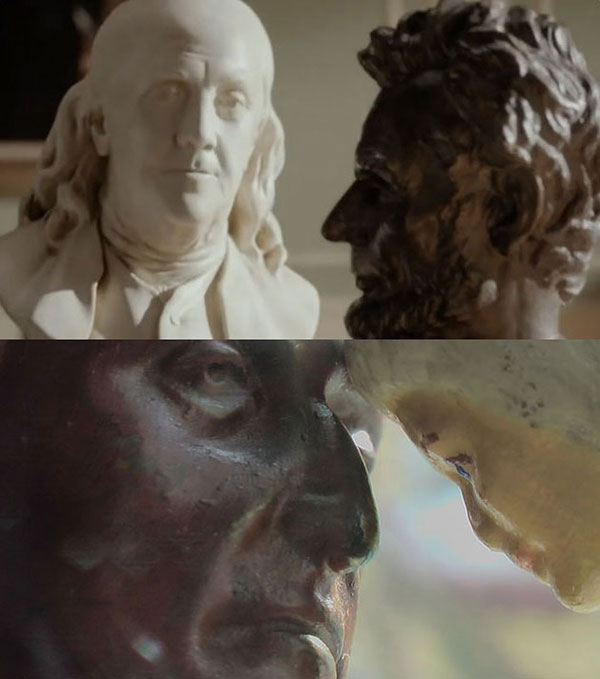
Text(e) Image Beat – talks (2015)
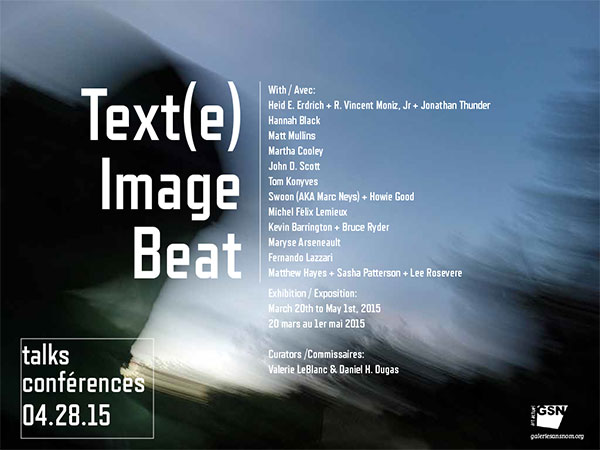
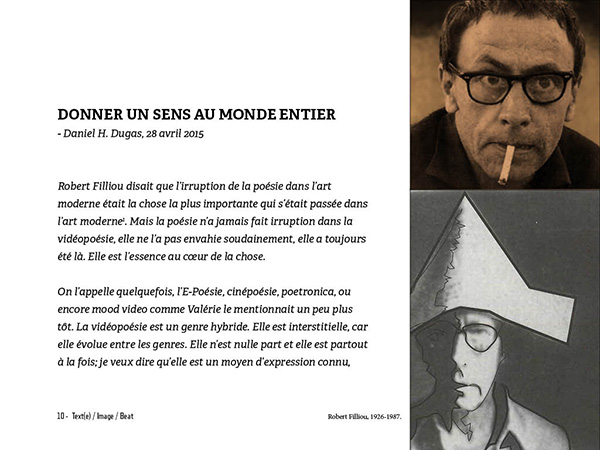
On April 28, Valerie LeBlanc and I each gave a talk at the Galerie Sans Nom during the Frye Festival.
![]() Text(e) Image Beat talks given through the Galerie Sans Nom and the Frye Festival, (pdf 2mb)
Text(e) Image Beat talks given through the Galerie Sans Nom and the Frye Festival, (pdf 2mb)
Spem reduxit / Hope restored (2014)
Key Words: New Brunswick, debt, marijuana, traffic code, zombies, marketing
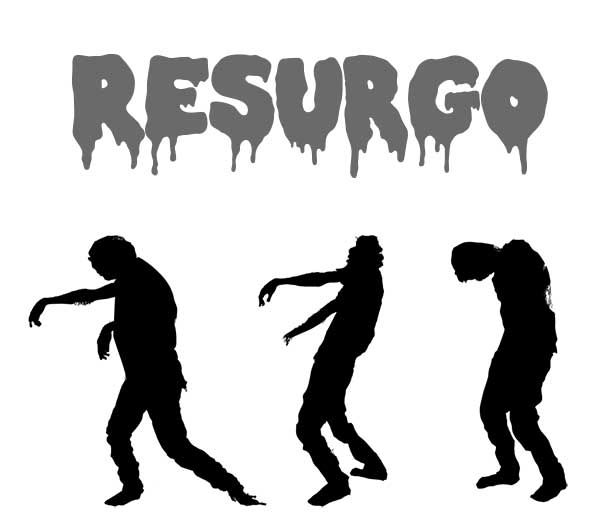
“Time to rebound is running out”, it’s a “financial disaster”[1], it’s “very concerning”[2], “our regional economy is flat-lining and we are depopulating… it’s a death spiral”[3], it’s a “perfect fiscal storm”[4] and so on. We’ve all heard the song. It’s terrible and it seems that there isn’t much we can do. We are doomed, but are we really?
Here are a few ideas, of what we might be able to do.
P as in POT
The first idea is a simple one: New Brunswick could legalize marijuana (medical and recreational). Our province has vast fields of uncultivated land, which always makes me wonder where have the farmers gone? In addition, our climate is mainly humid continental with warm summers, which is excellent for growing stuff. By decriminalizing marijuana, our province would be the first in the country, and this alone would be an incredible business opportunity.This prospect that has already created waves: in the aim of defining target markets and customers, market research professionals have begun asking Canadians what they think of marijuana. When the questions start flying, you can assume that the product is on its way. Even the Globe and Mail is writing about the future of cannabis in Canada.[5]
I like this idea because it has a two-fold potential: to generate tax revenues, and to become a fountain of youth. Legalize it and they will come. They, the young people from all over the country might consider New Brunswick as a place to live and to settle. This could be the true golden age of New Brunswick. For those who might say that marijuana falls into federal legislation (Controlled Drugs and Substances Act), I would point out that it is the provinces that control the “administration of justice.”[6] Moreover I would invoke the right to economic dignity. I believe that every province has a right to create an environment where its citizens can flourish and to deny New Brunswick the possibility of improved economic revenue would be criminal.
T as in TRAFFIC
The second idea concerns the drivers and the police departments of all towns and cities in New Brunswick. As a pedestrian I can attest to the danger of walking on our streets. There are many factors that make walking a dangerous activity: car culture, changing weather, darkness in winter, cultural misunderstanding on the meaning of yellow lights, etc. The fact is that there is a potential gold mine at every corner and maybe we should be exploiting these open pit deposits. A officer could monitor a crosswalk and give as many fines as necessary to drivers who see the flashing lights, see the pedestrians but don’t think they should slow down.
Z as in ZOMBIES
They are currently hot on TV with; Z Nation, The Returned, The Walking Dead, and of course, there are zombie walks all over the world. We are fascinated by their relentless stamina and as Angela Becerra Vidergar pointed out in a recent article “Zombies are important as a reflection of ourselves.”[7]
The question here is what can these tireless workers do for us? The motto for the city of Moncton is Resurgo, Latin for “To rise up again.” That is zombie speak and is awesome. The province should quickly seize Moncton’s motto, make it its own and market itself as a global hub for anything zombies. Here again, two birds with one stone, during the zombie walks, police could dispense tickets to zombie drivers.
Daniel Dugas
November 27 2014
[1] Richard Saillant, director general of the Canadian Institute for Research on Public Policy and Public Administration in “New Brunswick barrelling toward bankruptcy, analyst warns”, CBC News, April 29, 2014.
[2] Auditor General Kim MacPherson in “Auditor General troubled by debt growth”, CBC NEWS, Dec 05, 2013.
[3] Frank McKenna in, ‘Good governments do not allow mob rule”, The Chronicle Herald, November 4, 2014.
[4] Donald Savoie in “Paying the piper”, Atlantic Business Magazine, February 23, 2012
[5] Jeffrey Simpson, ‘Should Canada do a Uruguay on pot?’ Dec 3 2014.
See also, Jeffrey Simpson, ‘A marijuana measure worth watching‘. Dec 5, 2014.
[6] Sensible BC, Canada’s largest marijuana reform group in Frequently Asked Questions.
[7] Angela Becerra Vidergar in “Stanford scholar explains why zombie fascination is very much alive“, Stanford Report, February 20, 2013.
Zombie Silhouettes by SymbiopticStudios
Spem reduxit / Hope restored is New Brunswick ‘s motto
Click here to read part 1: Home of the New Balance: Nota bene published on August 26 2014.
Home of the New Balance: Nota bene (2014)

Let us never negotiate out of fear. But let us never fear to negotiate.
John F. Kennedy, Inaugural speech, January 20, 1961
Everyone knows it; the province of New Brunswick is in dire straits. The Auditor General, Kim MacPherson, describes the debt problem as “very concerning” and is calling for “significant changes to improve the financial health” of the province.[1] Every four years, the election cycle kicks in; electoral signs pop up everywhere and talking heads reveal their latest strategies to resolve the ever-growing debt problem. The best plan of action for many is to encourage gas exploration by means of hydraulic fracturing. Many are opposed. We know details of the proposed scenario, but never the whole story. What I would like to propose here is another way of resolving this lingering problem.
Sao Paulo, the 4th largest urban area in the world, believes that prohibiting advertising such as outdoor posters will free its citizens, the province of New Brunswick, the 8th smallest province in Canada, could certainly take example from this South American city and do exactly the opposite.[2] Let’s give advertisers what they are denied in Brazil: a world of total advertisement! We need to surrender, to abandon not only the sides of our roads and of our buildings but our very own nomenclature! We need to become somebody else! We need to BECOME THE SPONSORS! The idea is not new; other places have traded their souls before. In 1999, the village of Halfway, Oregon, changed its name to Half.com for a one-year period in accordance to a contract with the eBay subsidiary. In 2005, the town of Clark, Texas changed its name to DISH. In return the company DISH Network awarded DISH residents free cable service and programming for a period of 10 years. This lease is expiring very soon and if logic prevails, that little town’s name could switch to Netflix in the future.
What has never been done is what New Brunswick could try now, a systemic change of names. The names of all villages and towns, all roads, all monuments, all public buildings, even the name of the province would be on the shopping block. There are many ‘naturals’, names of company that could fit with existing communities. Through a sponsorship agreement with the communications and media company, the well known Rogersville could become Rogers. By adding an S to the town of Bailey in Sunbury County, they could probably make a deal with Gilbeys of Ireland, makers of the famous Baileys Irish Cream. Bay du Vin, on the south shore of Miramichi Bay, would certainly attract the interests of any number of wine makers. The little rural community of Burton could stay the same as long as Burton Snowboards get on board, so to speak. Add Tyres to Dunlop in Gloucester County and you get Dunlop Tyres. Popelogan Depot, an unincorporated community in Restigouche County could drop the Popelogan for Home and become Home Depot, and so on. As far as the name ‘New Brunswick’ goes, the footwear manufacturer New Balance seems to have the ideal credentials to take the big prize, in exchange for lots of royalties for NBers. Their logo is already a match with the current abbreviation of our province. On the other hand, settlements like Big Hole in Northumberland County and Baghdad near Grand Lake might have to be rebranded altogether. But imagine if there was a town called Sony, Irving or IBM. For one, the locals would have interesting demonyms. The IBMminions could even sing songs from their parent benefactor. The collection: Songs of The I.B.M. published in 1931 includes Painting the clouds with sunshine by J. P. Saxton:
We don’t pretend we’re gay.
We always feel that way,
Because we’re filling the world with sunshine.
With I.B.M. machines,
We’ve got the finest means,
For brightly painting the clouds with sunshine.
Records we make only to break,
Teaching the whole world we know
I.B.M.’s line, will all the time,
Help it to grow.
When things do not look right,
Our products make them right,
And keep on painting the clouds with sunshine.[3]
This grand project would not only redefine our onomastic landscape, it would also create a boom on employment: the lawyers, of course; the signage industry; the mapmakers and souvenir shops, would all be working overtime. But that’s not all; an underground network of hard-core genealogists unhappy with all of the changes could rise in every corner of the province of New Balance. Members of these cells would try to keep the old ways alive. It would be foolish to try to crush them. Au contraire, they should be encouraged, even if we have to create historical parks of taxonomy. Le Pays de la Sagouine and King’s Landing are two obvious models for this new world of ours. As for the sets of names to be sold, they would be auctioned to the highest bidder and would be legally binding according to the agreements drawn up by the province’s lawyers. With this plan, I truly believe that we could be out of debt in no time. If the DISH people, with the weight of all of their 201 citizens, got free cable for ten years, imagine what we could negotiate right here!
Daniel Dugas
Aug 23, 2014
P.S. Speaking words and marketing, we all recall the heated debate surrounding the slogan on New Brunswick’s licence plates: Be… In this place – Être… ici on le peut. As we know the slogan was discarded. The funny thing is that the province of New Brunswick was standing right in front of it’s very own slogan, a phrase that spells it’s own name, and on top of it all: a phrase that could be read in both official languages. This silver bullet is the Latin expression Nota bene, a phrase that means, “note well” and is often abbreviated as N.B. in English and N. B. in French. Sometimes ideas are sitting in front of us and only need only be picked up.
Part 2:
Spem reduxit / Hope restored (2014)
___________________________________________
[1] Auditor General troubled by debt growth, http://www.cbc.ca/news/canada/new-brunswick/auditor-general-troubled-by-debt-growth-1.2451996
[2] The city of Sao Paulo promulgated in 2006 the Cidada Limpa (Clean City Law) banning all outdoor advertising. The text stipulates that every citizen has a right to live in a city that respects the urban space, heritage and architectural integrity of the buildings. http://ww2.prefeitura.sp.gov.br/cidadelimpa/conheca_lei/conheca_lei.html
[3] Songs of The I.B.M. Fellowship Songs of International Business Machines Corporation, 270 Broadway, New York, N. Y. 1937. Painting the clouds with sunshine, p.14. http://www.robweir.com/blog/attachments/songs-of-the-ibm.pdf
Daniel H. Dugas
Archives
Blogroll
- A.I.R. Vallauris
- ACAD
- Adobe additional services
- Adobe Creative Cloud
- AIRIE
- Amaas
- Amazon Author Central
- ARTothèque
- Australian Poetry
- Basic Bruegel
- Bitly
- CCCA
- CDBaby
- Cycling 74
- Dissolution
- Éditions Prise de parole
- Emmedia
- eyelevelgallery
- FAVA
- Festival acadien de poésie
- Festival FRYE Festival
- FILE – Electronic Language International Festival
- Freeware list
- Fringe Online
- Galerie Sans Nom
- Gotta Minute Film Festival
- Instants Vidéo
- JUiCYHEADS
- Kindle Direct Publishing
- Klondike Institute of Art and Culture
- La Maison de la poésie de Montréal
- La Maison de la Poésie et de la Langue française Wallonie-Bruxelles
- Laboratorio Arte-Alameda
- Le Centre Jacques Cartier
- Liberated Words
- Maison Internationale de la Poésie – Arthur Haulot
- MediaPackBoard
- Miami Book Fair International
- Monoskop
- Mot Dit
- NSCAD University
- Paved Arts
- PoetryFilm
- Portail des auteurs du Nouveau-Brunswick
- RECF
- Revue Ancrages
- Salon du Livre du Grand Sudbury
- Sculpture Space
- Subtropics.org
- Sydney college for the arts
- The Centre for Contemporary Canadian Art
- The New Gallery
- Trevigliopoesia
- tumbler-documents
- V Tape
- Valerie LeBlanc
- VideoBardo
- Void Network-Κενο Δίκτυο
Categories
- #covidpoèmes
- Advertisement
- AIRIE
- Ancrages
- anthology
- Anthropocene
- Architecture
- Around Osprey
- art
- Article de presse
- arts visuels
- audio
- Australian Poetry
- Basic Bruegel Editions
- Book
- book fair
- Cafe Poet Program
- Ce qu'on emporte avec nous
- Citations gratuites
- Collaboration
- commentaire
- commentary
- Compte rendu
- conférence
- Conservation Foundation of the Gulf Coast
- COVID-19
- Critique littéraire
- culture
- Daniel Dugas
- Design
- Édition Michel-Henri
- Éditions Perce-Neige
- Éloizes
- Emmedia
- emoji etc | émoji etc
- Environnement
- essai
- essay
- Everglades
- Exhibition
- festival
- Festival acadien de poésie
- Festival Frye Festival
- FIPTR
- Flow: Big Waters
- Fundy
- Habitat
- installation
- Instants Vidéo
- interactivity
- journal
- JUiCYHEADS
- Kisii
- L'Esprit du temps
- laptop
- Leaving São Paulo
- lecture
- Livre
- logos
- Magazine
- Miami Book Fair
- Moncton 24
- novel
- OASIS
- oil spill
- perception
- performance
- Photo
- poésie
- Poetic Licence Week
- Poetry
- politics
- politique
- press
- Prise de parole
- Revue Ancrages
- salon du livre
- sculpture
- Sculpture Space
- sound
- Souvenirs
- Spirit of the Time
- Style & Artifacts
- Symposium d'art/nature
- talk
- television
- The New Gallery
- Uncategorized
- Valerie LeBlanc
- vidéo
- vidéopoésie
- Videopoetr/Vidéopoésie
- videopoetry
- visual arts
- What We Take With Us
- youth literature







